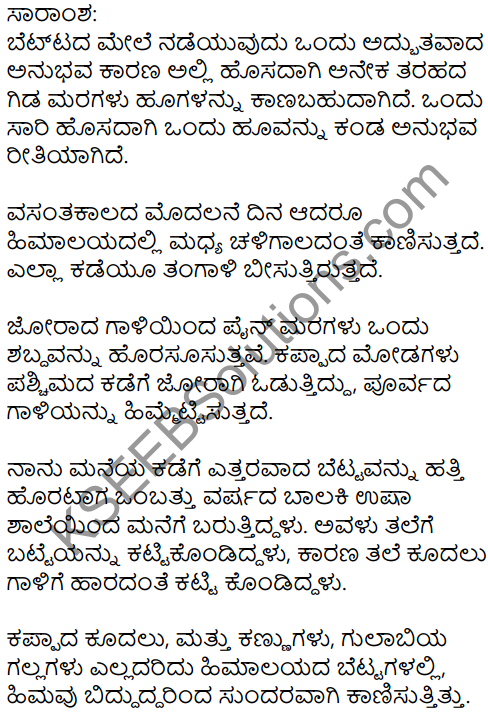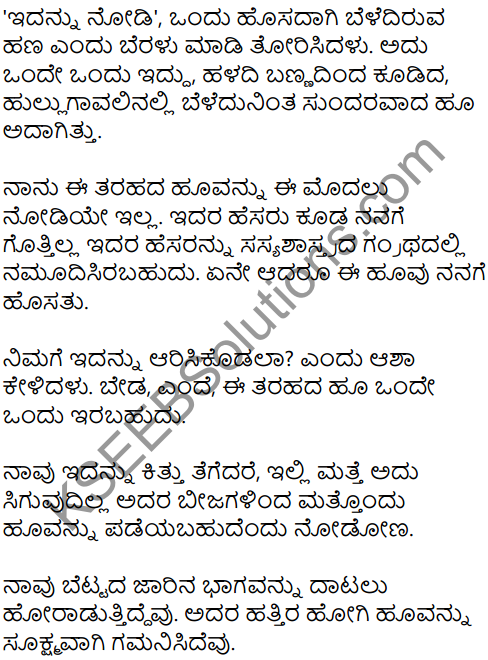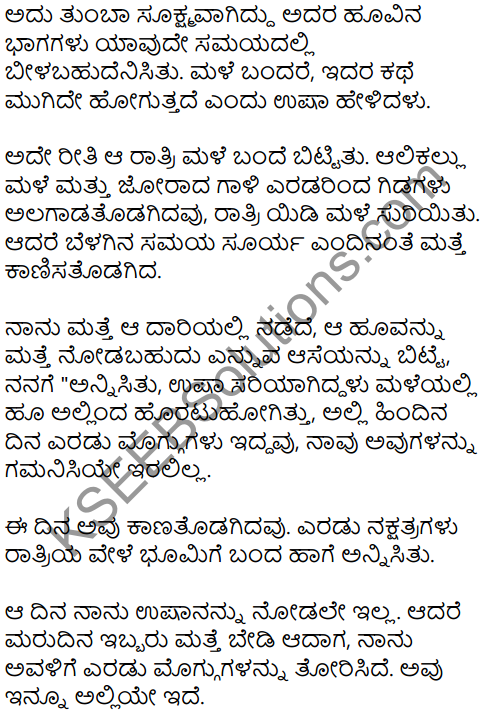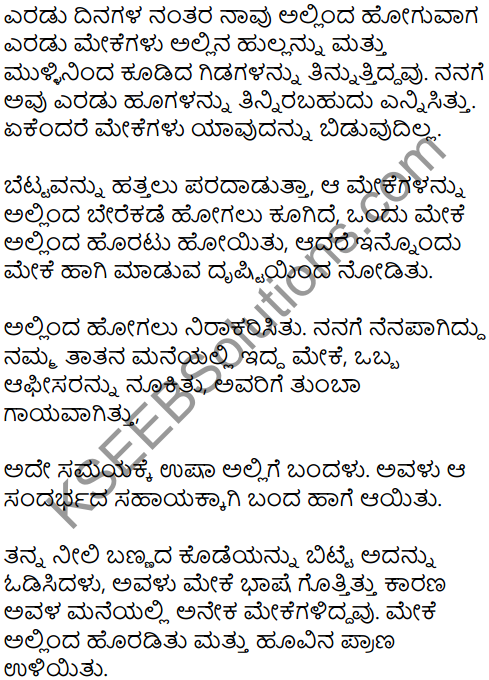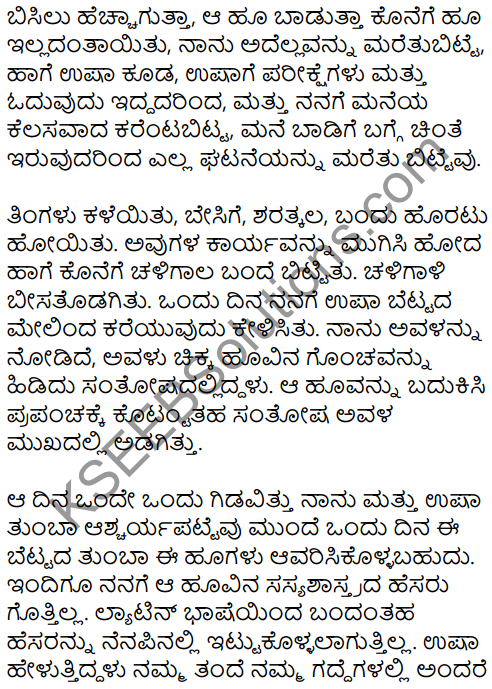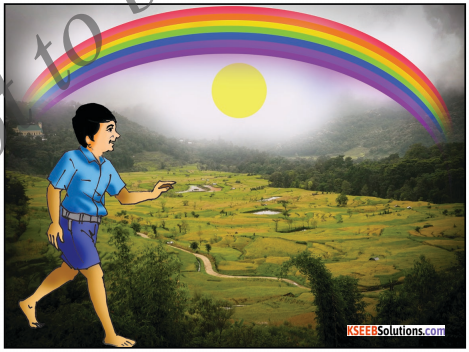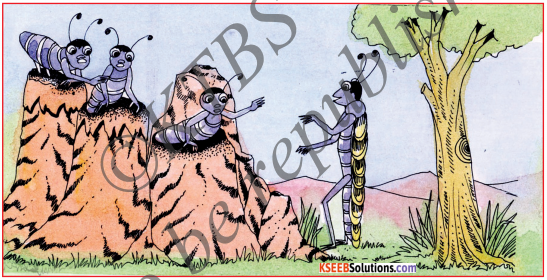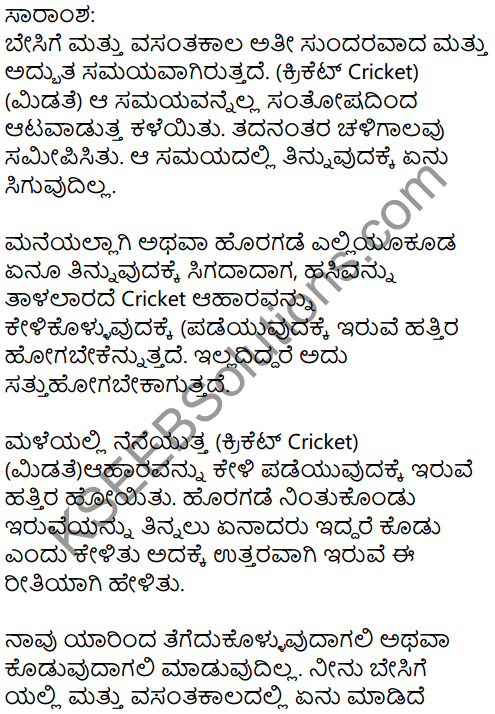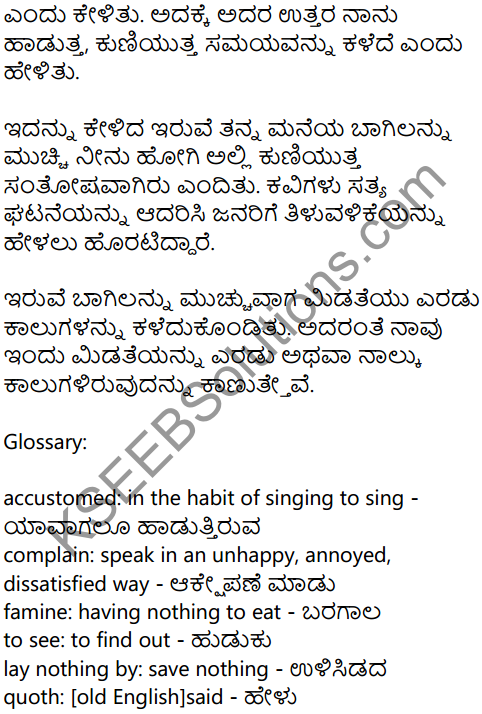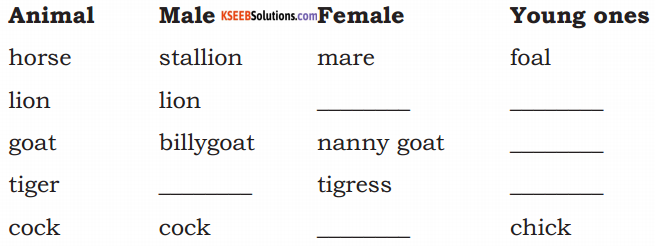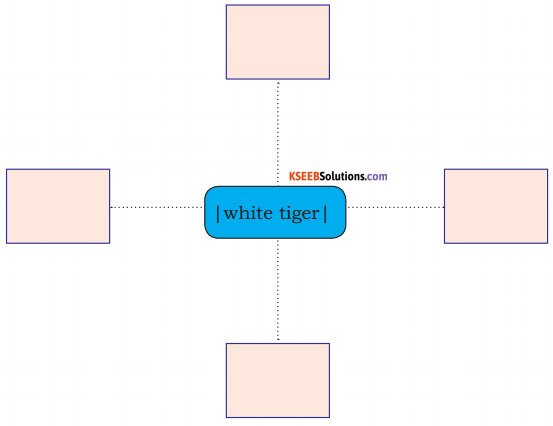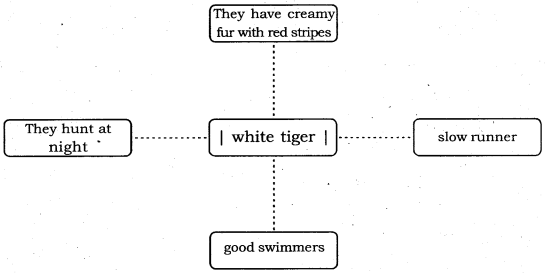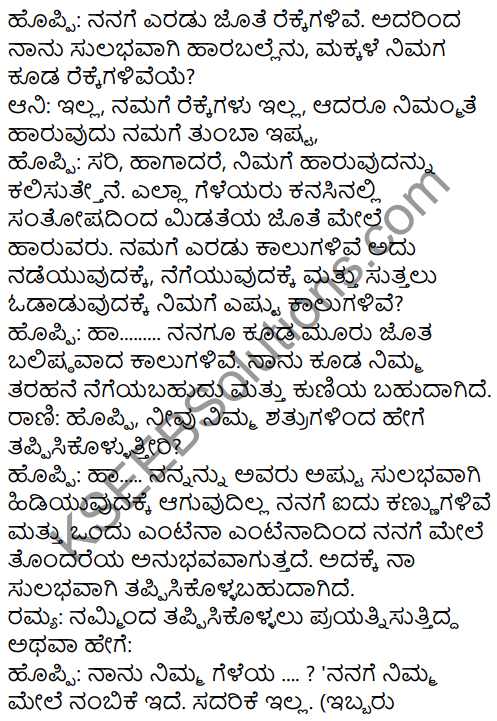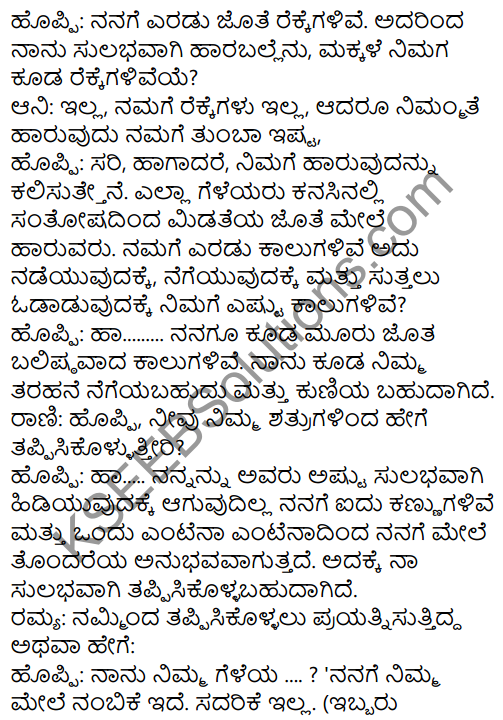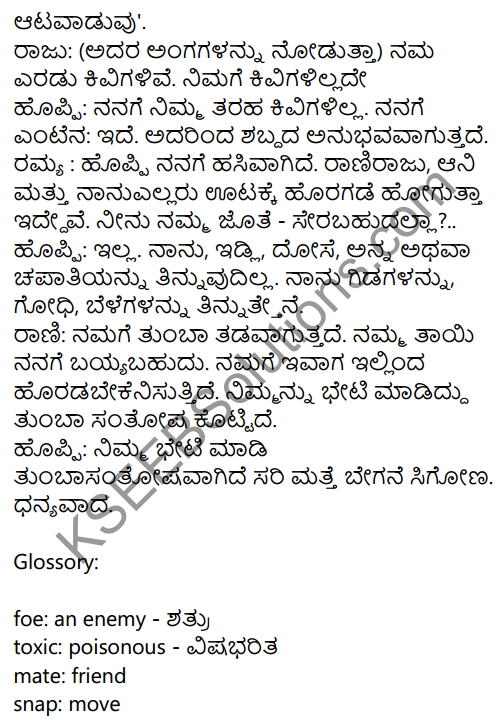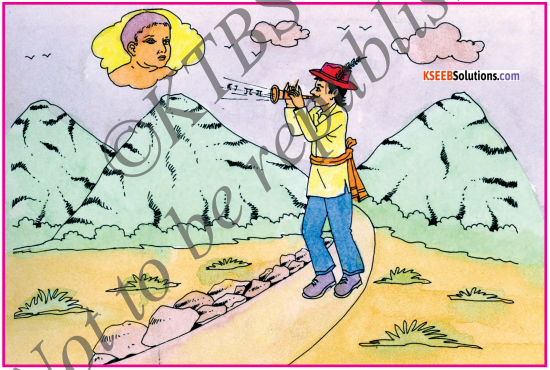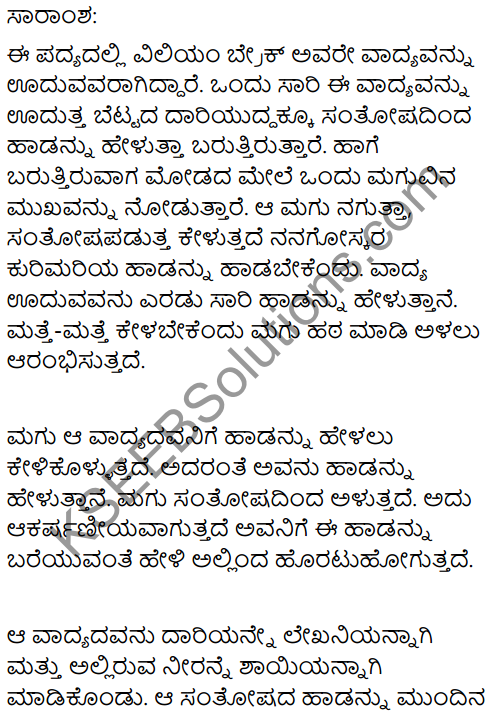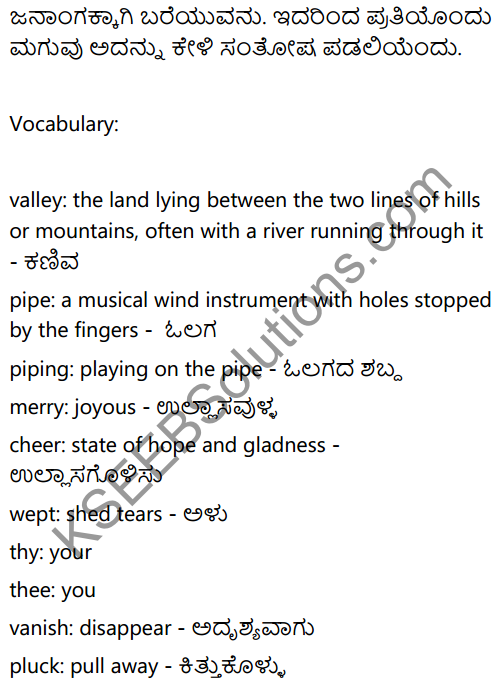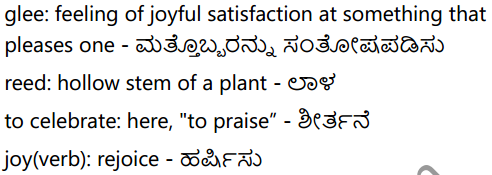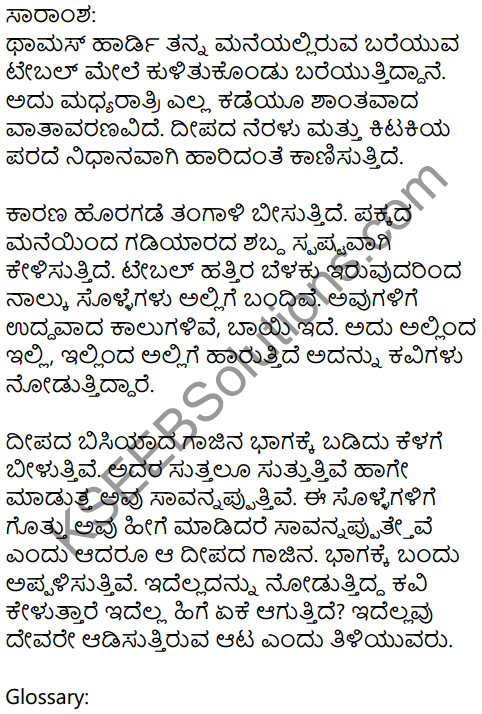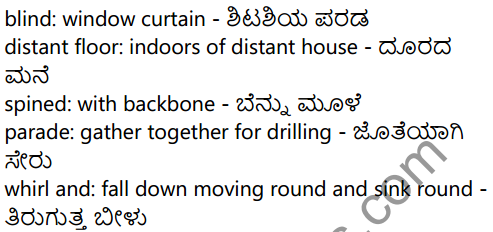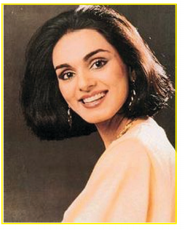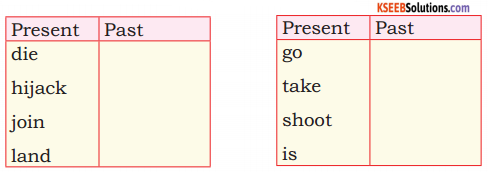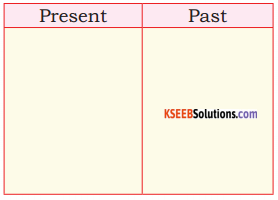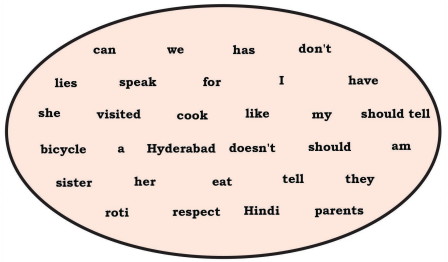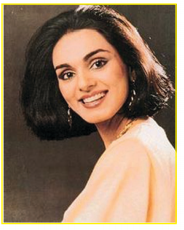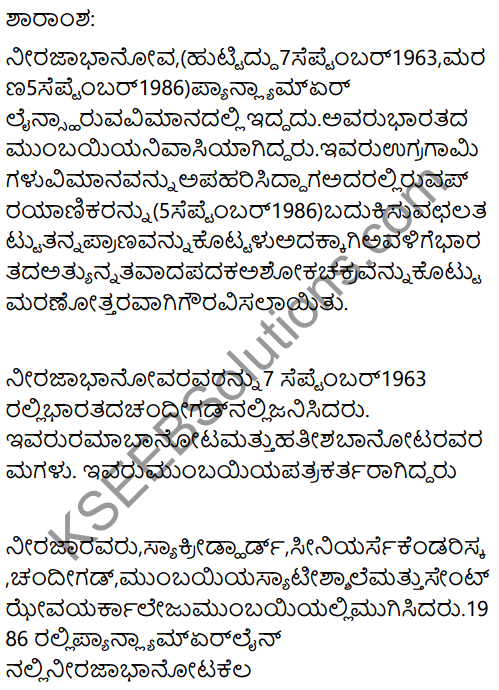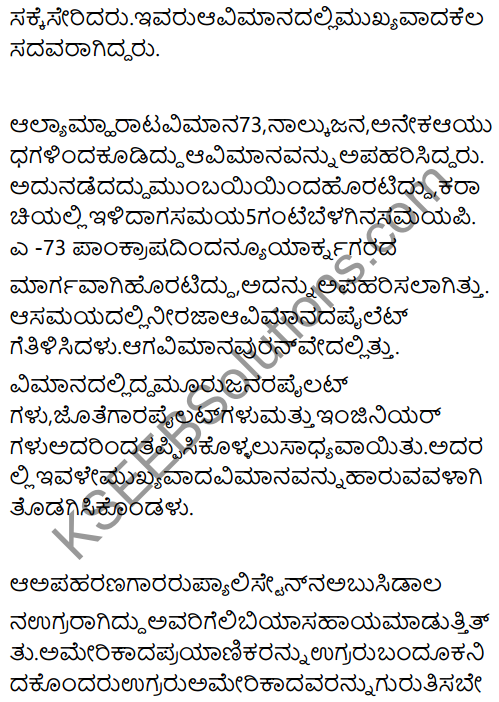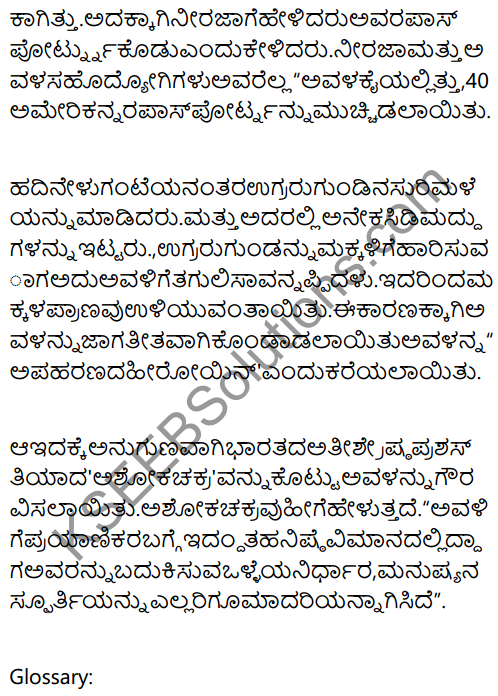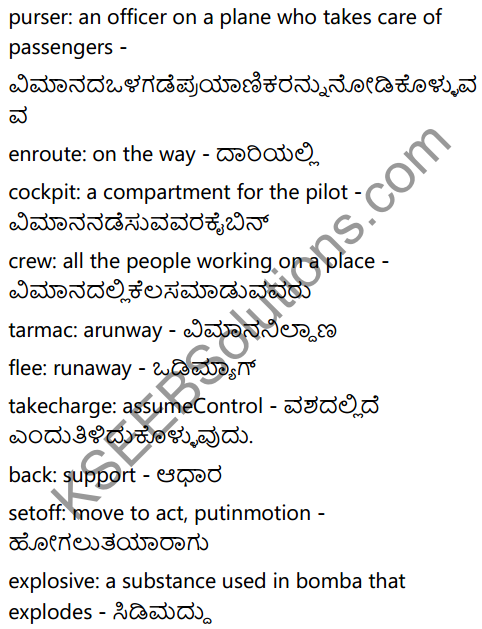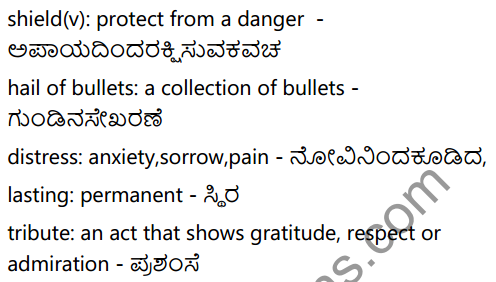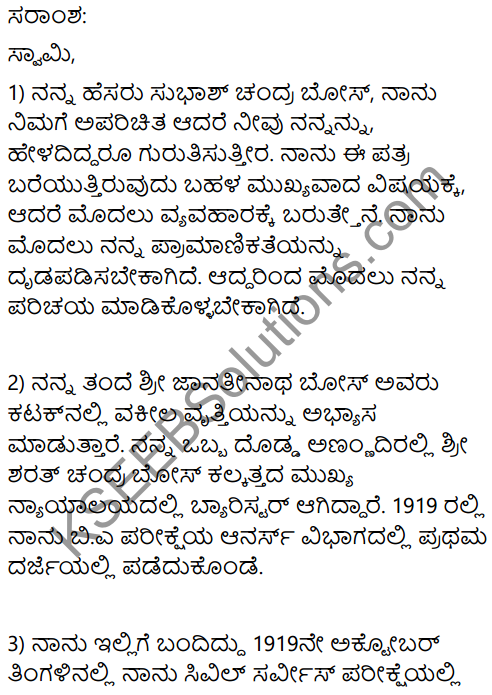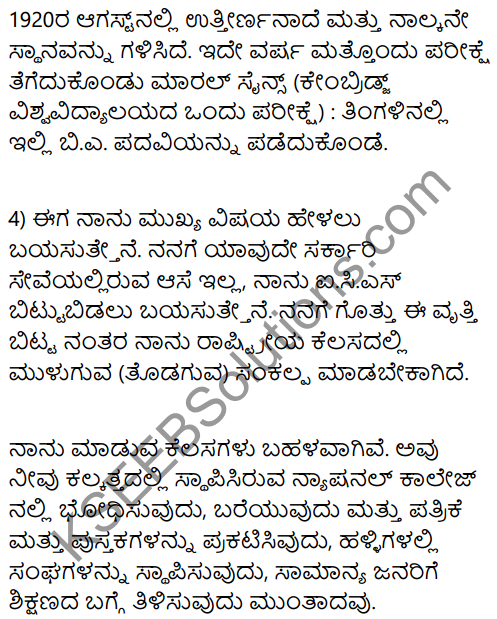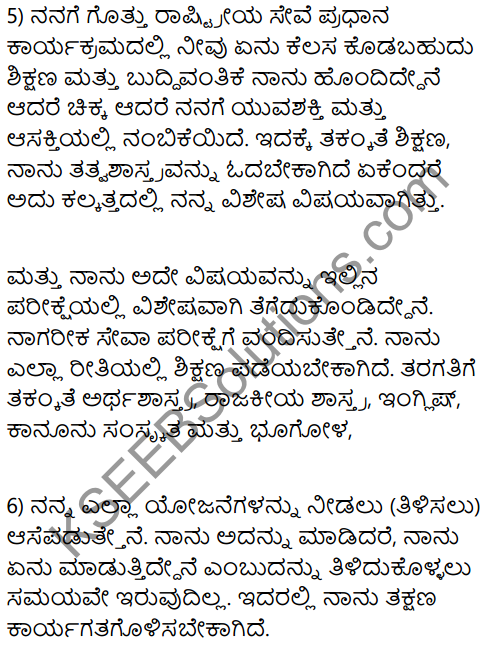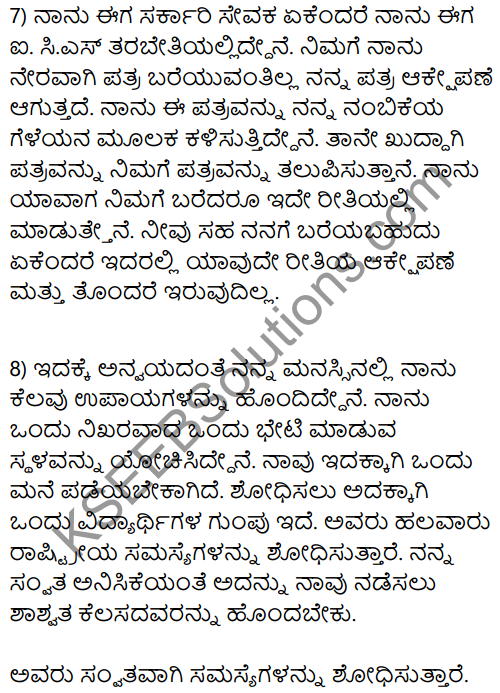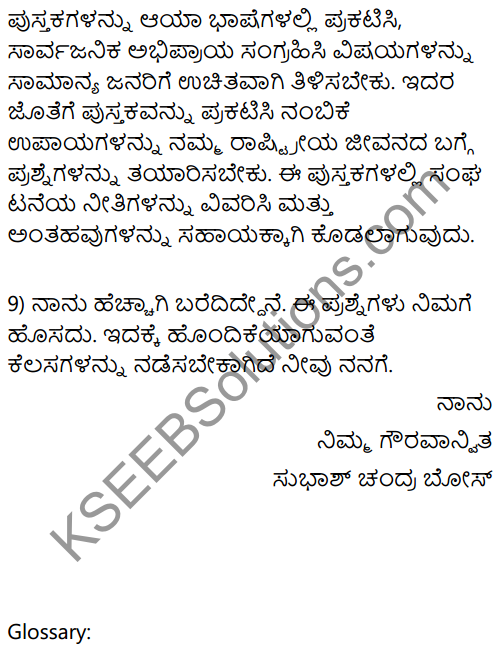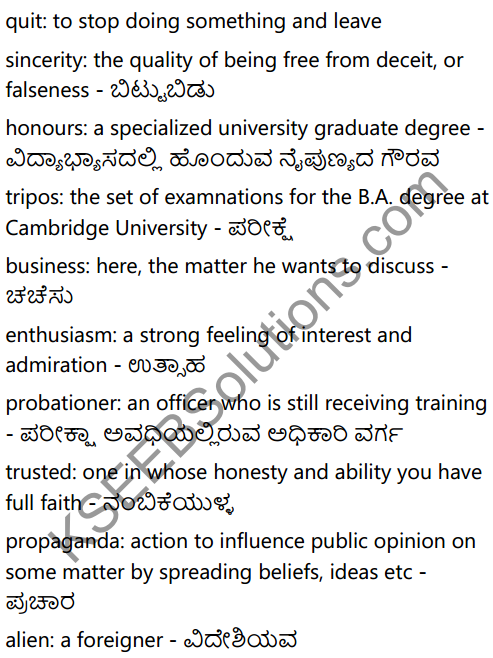Siri Kannada Text Book Class 6 Answers Solutions Guide Notes Pdf free download is part of KSEEB Solutions for Class 6. Here we have given Karnataka State Board Syllabus 6th Standard 1st Language Siri Kannada Textbook NCERT Solutions. Students can also read Tili Kannada Text Book Class 6 Solutions of 2nd language.
Siri Kannada Text Book Class 6 Answers Solutions Guide (1st Language)
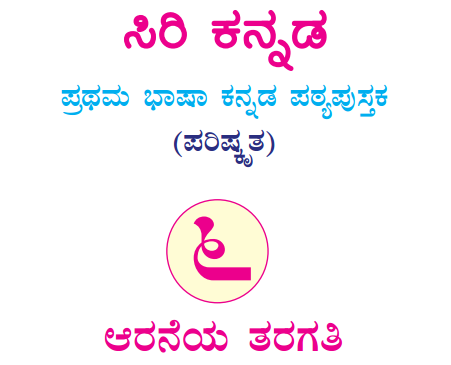
Class 6 Siri Kannada Gadya Bhaga Karnataka State Board Solutions
- Chapter 1 Doddavara Dari (B.G. Ramesh)
- Chapter 2 Gandharvasena (Samiti Racane)
- Chapter 3 Krishna Sudhama (V S Shirahatti Mata)
- Chapter 4 Da. Rajakumar (Doddahulluru Rukkojirav)
- Chapter 5 Dhanyavada Helida Kokkare (Da. Anupama Niranjana)
- Chapter 6 Meravanige (Samiti Racane)
- Chapter 7 Yana Kuritondu Patra (Samiti Racane)
- Chapter 8 Karnataka Ekikarana (Samiti Racane)
Class 6 Siri Kannada Padya Bhaga Karnataka State Board Solutions
- Chapter 1 Besige (B.R.Laksmanarav)
- Chapter 2 Mangala Grahadalli Putti (C.M. Govinda Reddy)
- Chapter 3 Nee Hoda Marudina (cennanna valikara)
- Chapter 4 Magu Mattu Hannugalu (H.S. Sivaprakas)
- Chapter 5 Hosa Balu (B.S.Kurkal)
- Chapter 6 Gangavva Tayi (Prof. Siddalinga pattanasetti)
- Chapter 7 Hrudaya Vachanagalu (amrta somesvara)
- Chapter 8 Kittura Kesari (Pa.Gu. Siddapura)
Class 6 Siri Kannada Puraka Pathagalu Karnataka State Board Solutions
- Chapter 1 Natyakala Dhurandhara Mahammad Peer (Samiti Racane)
- Chapter 2 Avva (Lalita.K.Hosapyati)
- Chapter 3 Putta Lakshmi Kathe (K.H.Raghunatha)
- Chapter 4 Huchu Hurulu (Bici)
- Chapter 5 Iruve (Siddakatte Candraraja Setti)
Tili Kannada Text Book Class 6 Answers Solutions Guide (2nd Language)
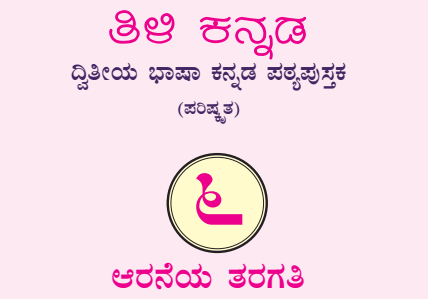
Class 6 Tili Kannada Gadya Bhaga Karnataka State Board Solutions
- Chapter 1 Tola Bantu Tola (Sampadita)
- Chapter 2 Kugutide Pakshi (Sampadita)
- Chapter 3 Panchatantra (Gopalakrsana Adiga)
- Chapter 4 Edegundada Dhiraru (Sampadita)
- Chapter 5 Sahasi Monalisa (Sampadita)
- Chapter 6 Mallakamba (Sampadita)
- Chapter 7 Desapremi Kavi Iqbal (ko. Chennabasappa)
- Chapter 8 Ninnallu Adbhuta Shaktiyide (Sampadita)
Class 6 Tili Kannada Padya Bhaga Karnataka State Board Solutions
- Chapter 1 Ba Bega Surya (Manu Baligara)
- Chapter 2 Nanna Desha Nanna Jana (Cennavira Kanavi)
- Chapter 3 Nammura Kere (Cidananda Sali)
- Chapter 4 Kannadamma (Bhagirathi Hegade)
- Chapter 5 Aikyagana (G.S. Sivarudrappa)
- Chapter 6 Suntaragali (Kayyara Kinnarai)
- Chapter 7 Chutukugalu (Dinakara Desayi)
Class 6 Tili Kannada Nataka Karnataka State Board Solutions
- Chapter 1 Kodi Nanna Balyava (Malati Pattanasetti)
- Chapter 2 Veera Rani Keladi Chennamma (Samiti Racane)
Class 6 Tili Kannada Puraka Odu Karnataka State Board Solutions
We hope the given Siri Kannada Text Book Class 6 Solutions Answers Guide Notes Pdf free download will help you. If you have any queries regarding Karnataka State Board Syllabus 6th Standard 1st Language Siri Kannada Textbook Answers, drop a comment below and we will get back to you at the earliest.

